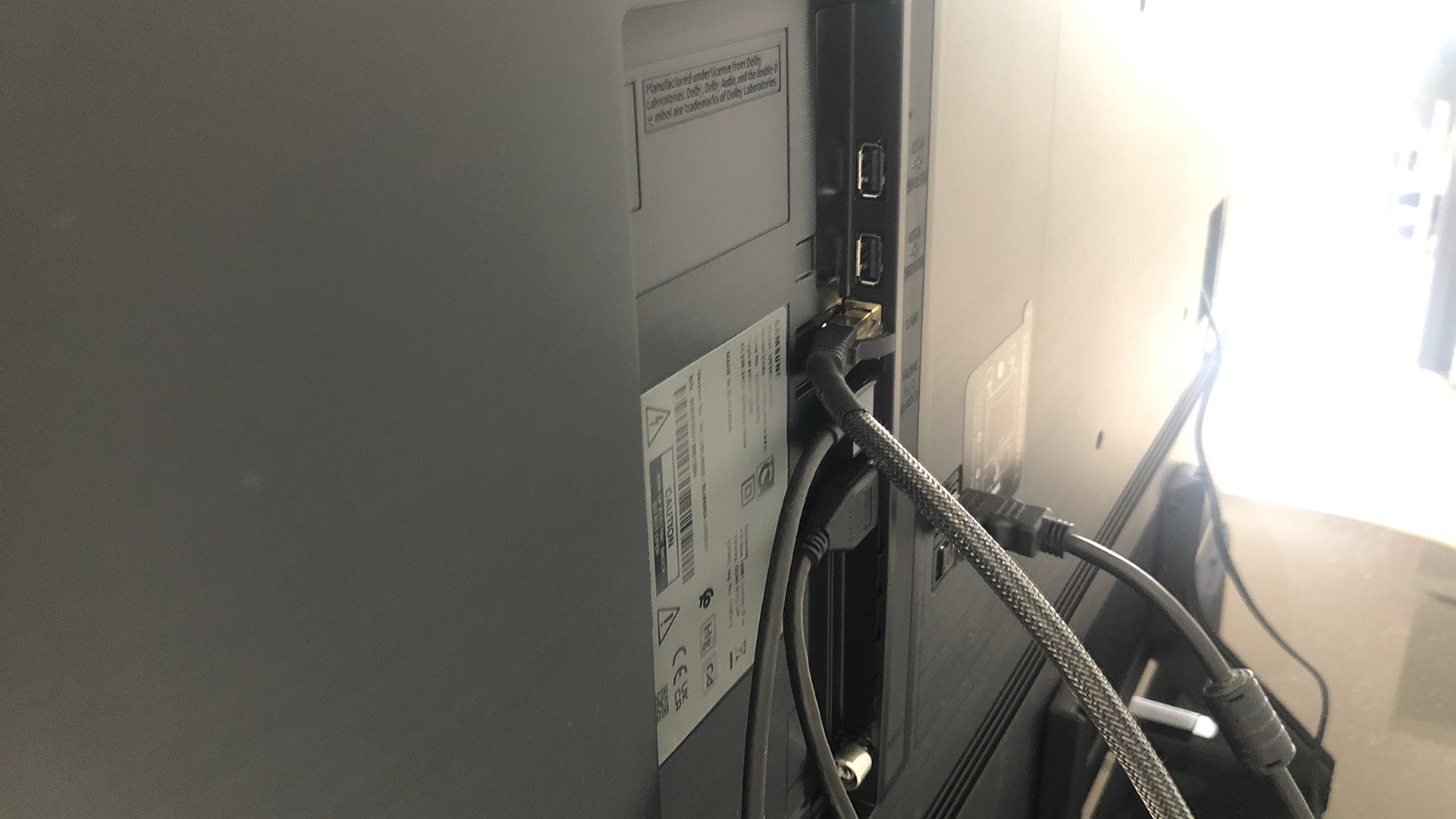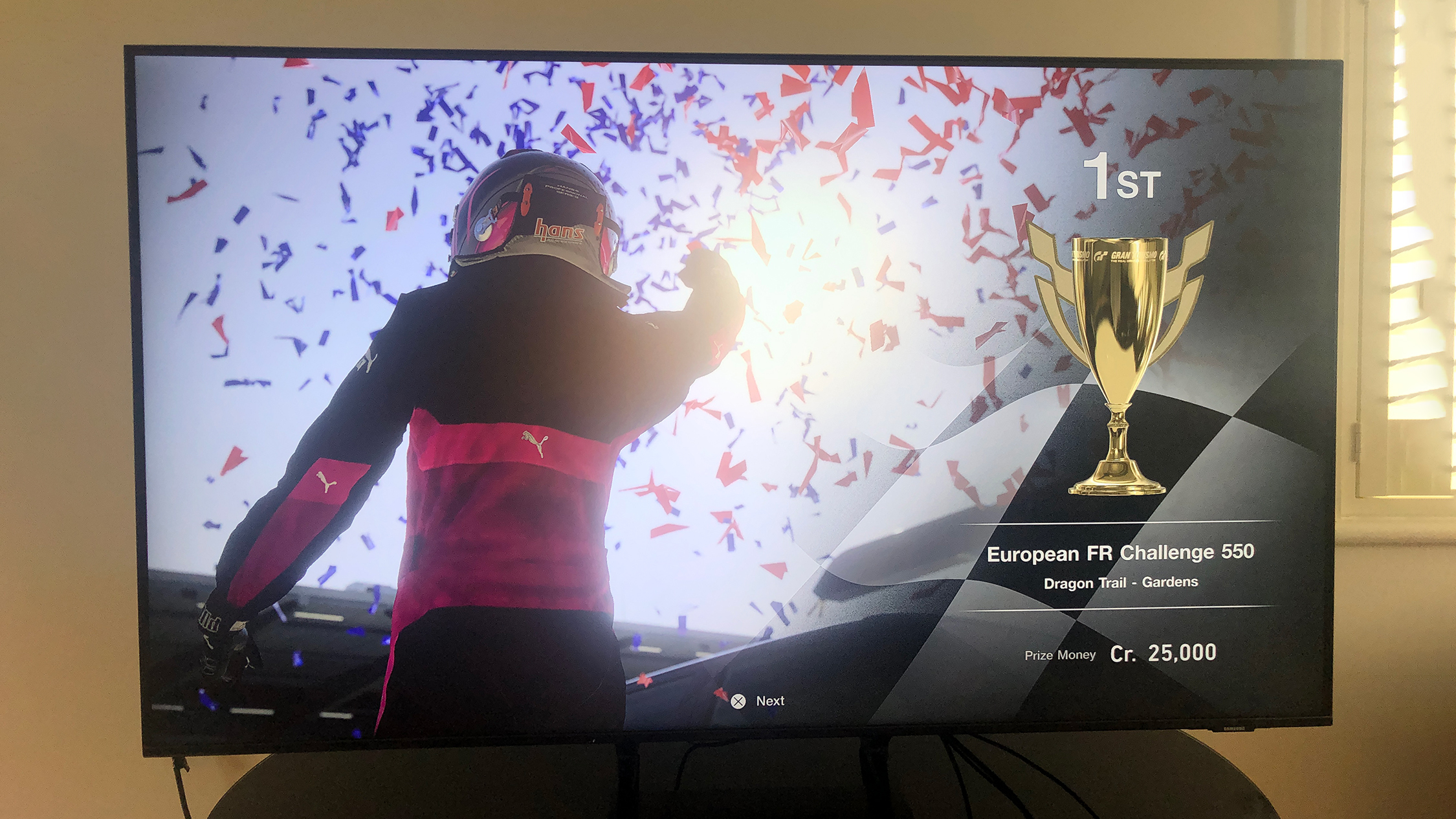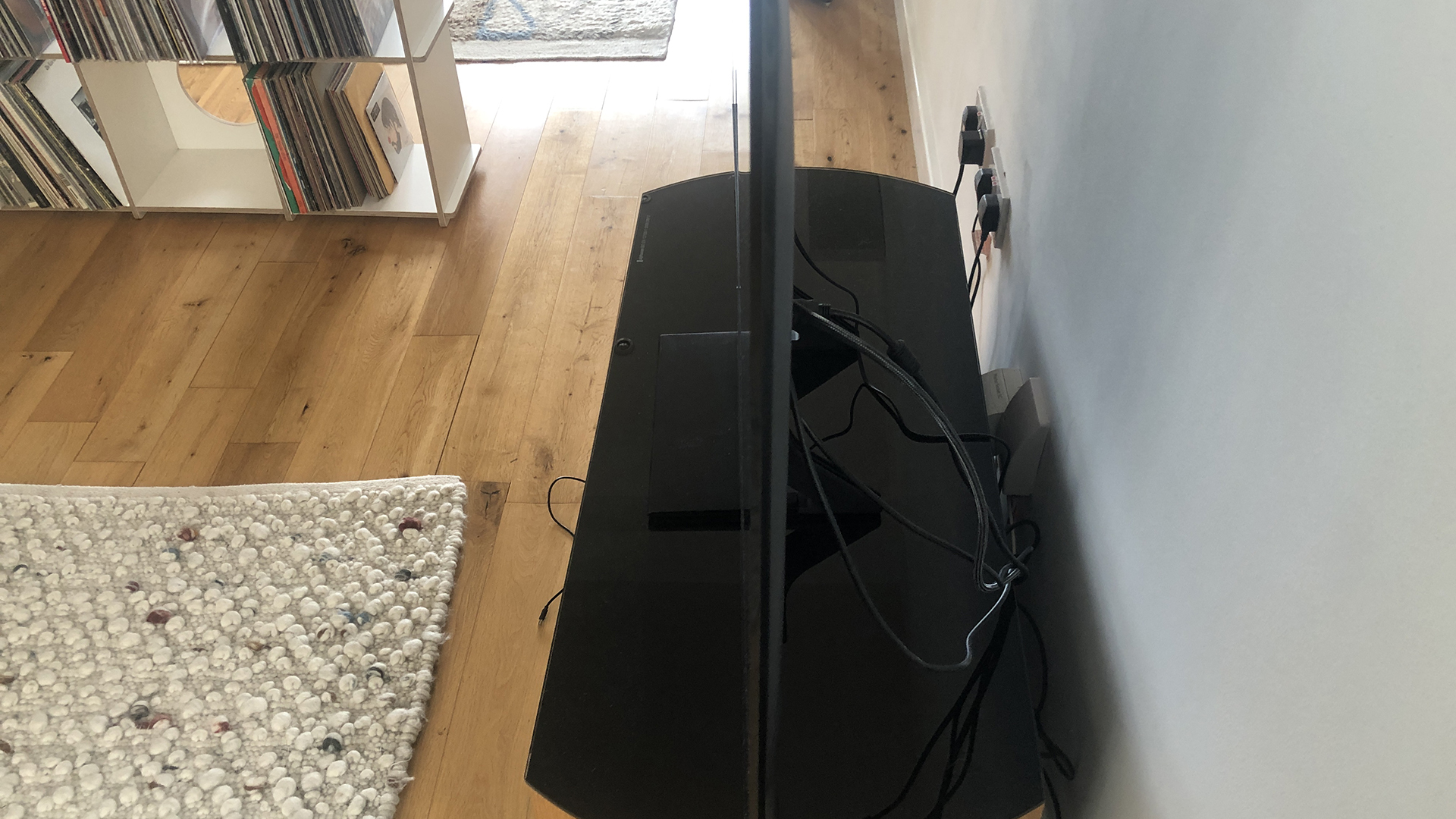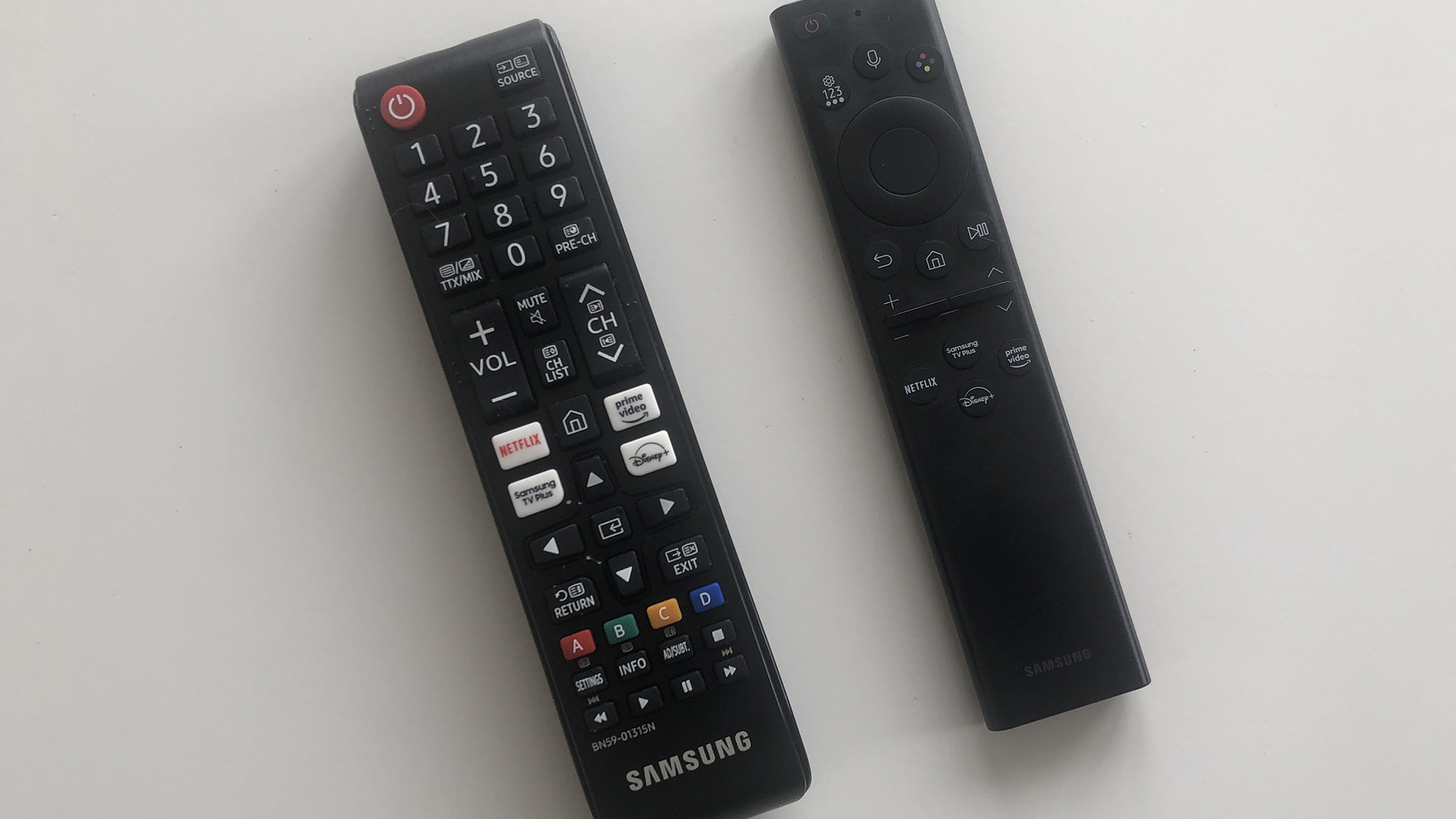Samsung BU8500: Two-minute review
The Samsung BU8500 is designed to offer some up-to-the-minute functionality, discreet looks, and rock-solid build quality at a price that the majority of us won’t baulk at. And it absolutely nails that.
Certainly it’s hard to argue with the Samsung BU8500’s 4K HDR specification (albeit without Dolby Vision), a trio of HDMI inputs, voice-control, two (count ‘em!) remote controls and a Tizen smart TV interface featuring all the apps you want at this sort of money. And when you consider the BU8500 as an object, it’s slimmer and more understated than many flagship TVs from just a few years ago.
In this Samsung BU8500 review, we’re looking at the 55-inch model, but it’s available in both bigger and smaller sizes, from 43 inches up to 75 inches.
Given the right stuff to work with, picture performance is more than acceptable – obviously, not a match for the best TVs overall, but in strong contention with the best TVs under £1000. In every significant area of picture-making, the Samsung’s never less than competitive – and its backlighting is beautifully implemented, which helps the impression of quality no end. And as long as you temper your expectations it even sounds okay… but we think you should budget to add one of the best soundbars anyway, though.
As an upscaler, it has its limitations, most certainly – but it’s far from alone in this, certainly not where big and (relatively) affordable TVs are concerned. And the lack of Dolby Vision HDR is still just as annoying here as it is with other, more expensive Samsung televisions.
So not for the first time (and almost certainly not for the last), Samsung has managed to hit a price-point without too many obvious compromises. It’s absolutely one of the best Samsung TVs available today for those on a budget.
Samsung BU8500 review: Price and release date
- Released in summer 2022
- 43-inch £599 | 50-inch £699 | 55-inch £799 | 65-inch £1,099 | 75-inch £1,499
- US launch unknown at the time of writing
The Samsung BU8500 is on sale now, though at the time of writing this particular model is available in Europe and some other countries, but hasn’t been announced for North America or Australia (though it is available in New Zealand).
Many countries receive market-specific variations of television, of course, due to differences in broadcast standards and so on – so at present there’s no confirmation of what the equivalent Samsung screen will be in other territories. What we can be certain of, though, is that both the United States and Australia will be getting a range of competitively priced, competitively specified Samsung 4K LED TVs that are more than a little reminiscent of the BU8500 series.
The BU8500 comes in a range of sizes, from 43 inches up to 75 inches. The 43-inch model is officially priced at £599, the 50-inch costs £699, the 55-inch costs £799, the 65-inch costs £1,099, and the 75-inch costs £1,499.
This is right in line with how the Samsung AU9000 from 2021 was priced at launch, and will keep this model competitive with with 2022’s affordable models from the likes of Hisense and TCL.

Samsung BU8500 review: Features
- 4K LED with HDR10+
- Tizen smart TV software
- No FreeSync support
This is a 4K LED screen, powered by Samsung’s ‘Crystal 4K’ processor and with support for HLG and HDR10+ standards of HDR (we’re used to Samsung refusing to offer support for Dolby Vision, but it never stops being galling).
Sound is delivered by a two-channel driver arrangement driven by 20 watts of power – Samsung has included the ‘Lite’ version of its ‘Object Tracking’ audio arrangement here, and the BU8500 is also ‘Q Symphony’-compatible. This means the TV’s speakers can actually join in when a compatible Samsung soundbar is connected for an even bigger sound.
The BU8500 features three HDMI 2.0 inputs – there’s compatibility with the ALLM and HGiG aspects of next-gen games console specification, but there’s no support for AMD FreeSync, which is a step backwards from last year’s Samsung AU9000.
One of the HDMI ports is eARC-enabled for use with a soundbar. Other physical inputs include an Ethernet socket, a couple of USBs and an aerial binding post for use with the onboard RF tuner, and there’s also a digital optical output. Wireless alternatives run to Bluetooth 5.2 and Wi-Fi.
As far as controlling the screen goes, the BU8500 is compatible with Samsung’s SmartThings control app, and also ships with a couple of remote control handsets. One is the sort of small, hard and overburdened remote control we’re all used to seeing accompanying a mainstream TV – too many buttons, almost all of them too small, and all unpleasant to the touch. The other, though, is a far swankier handset that features the bare minimum of controls, is far nicer in the hand, and is solar-powered. There’s compatibility with Amazon Alexa, Google Assistant is built in, and there’s also Bixby voice-control (presumably for Samsung employees).
Whichever method you decide to employ, though, you’ll be navigating a slightly stripped-back version of Samsung’s Tizen-based Smart TV interface. It’s as clean and logical as ever here (although it’s less responsive here than in other applications), and features a quite extensive selection of top-tier apps. All the UK catch-up services, Netflix, Amazon Prime Video , Apple TV and Disney+ constitute the headlines, of course, but if Hipstr or KetchupTV (for instance) are more to your taste then dive right in.

Samsung BU8500 review: Picture quality
- Good detail levels, strong contrast
- Not the greatest upscaler
- Getting a convincing color balance takes time
Getting a picture balance you’re happy with from the Samsung BU8500 is just a bit fiddlier than it should be, especially given the relative lack of set-up options available here – but perseverance will be well-rewarded. With one or two minor caveats, the Samsung BU8500 performs very well relative to its asking price.
Contrasts, for example, are quite strong. The BU8500 can’t quite get down to ‘true’ black, but the dark tones it does generate are very deep indeed, but retain a lot of detail and variation within them. At the opposite end, white tones are respectably white, nice and clean, and equally information-rich. The Samsung can cope with both in the same scene without alarms, helped quite a bit by nicely even backlighting, which is not always a given in cheaper TVs.
During setup, the adjustment to color balance is on a bit of a hair-trigger – it’ll tip from ‘just slightly understated’ to ‘rather too lively’ in no time. But play around a bit to find the optimum balance and the color palette is naturalistic, convincing and wide-ranging. Skin-tones, in particular, are detailed and varied.
Edge-definition is good, as is depth of field – and the Samsung has little difficulty controlling even complex or tight patterns, describing (for example) checkered fabric with no shimmer or crawl. Stability is strong overall, in fact, with only the most testing on-screen motion provoking any uncertainty. By prevailing standards, the BU8500 is an accomplished TV when given the best 4K HDR content, such as a UHD Blu-ray.
Of course, we don’t all live on a diet of brand-new cutting-edge content – and when it comes to upscaling, the Samsung (mostly) continues its good work. Certainly an HD broadcast of some elite-level tennis suffers hardly at all – colors are confidently described, on-screen movement is stable in almost all circumstances, and detail levels stay high. There’s a little coarsening of skin-tones and a hint of jaggedness to the more difficult edges, but by and large the BU8500 remains eminently watchable.
Anything less information-rich than that can suffer somewhat, mind you. Stick on some vintage content from the daytime TV schedules and you’re greeted with images that are soft and lacking in definition, light on detail and lighter still on motion-control. The Samsung is far from alone in falling to pieces somewhat when given this amount of upscaling to do, but that doesn’t make it any more comfortable to watch.
Despite lacking the ability to exploit a lot of the headline features of a next-gen games console, the BU8500 is nevertheless a perfectly respectable way to enjoy gaming. Its facility with contrasts and motion-control is particularly worthwhile, and while Samsung is shy of revealing the BU8500’s input lag measurements they’re definitely not any kind of impediment.

Samsung BU8500 review: Sound quality
- Acceptable scale of sound
- The mid-range projects well
- Hard and spitty with high frequencies
Slim chassis, great spec and very agreeable picture performance is all well and good – but when it comes to audio performance, the Samsung BU8500 sounds like an affordable flatscreen TV of the old school. And that’s not necessarily a good thing.
Low-frequency presence is modest, but what bass activity the Samsung generates is at least properly controlled and polite. There’s not the sort of extension that’s going to make a plastic chassis resonate, but there is a reasonable amount of detail to what passes for the ‘low end’.
It’s quite distinct through the mid-range and, again, quite decent levels of detail. Voices project forwards well, and they’re actually quite nicely balanced – until they start to nudge into the upper frequency range. Once it reaches the higher frequencies, the BU8500 becomes quite hard and edgy, bringing sibilance and even a hint of coarseness to treble sounds. It’s a trait that’s only exacerbated by volume.
The ‘object tracking’ aspect of sound is mild in the extreme here, but the Samsung does at least offer reasonable sonic scale. Dynamically, though, it’s pretty inhibited.
In short: you’ll need one of the best soundbars if you want the sound to match the visuals, even if it’s only a very affordable one. There’s a gap between the bottom of the screen and the surface the TV’s standing on for a reason, it turns out.

Samsung BU8500 review: Design
- Slim 25.7mm depth
- Two looks for the stand
There are limits to the amount of ‘designing’ that can be done to a TV at the best of times, and ‘the best of times’ most certainly does not include a mainstream range of aggressively priced televisions designed to appeal to as many folk as possible. So the BU8500 is an unremarkable looker.
That’s a positive, though. At a touch over 25mm deep for our 55-inch version, the chassis is enviably slim, and the bezels surrounding the screen are minimal too. It can be wall-mounted, of course. If you don’t fancy that option, though, and would rather stand your new TV on a surface, the Samsung’s feet are usefully close together, so your surface needn’t be as wide as the screen itself.
There are two feet to be screwed to the chassis, and they can be made to look like a single pedestal using a plastic cover that feels rather cheap and fits only approximately. Still, it raises the bottom of the screen sufficiently to comfortably fit a soundbar beneath.
Samsung BU8500 review: Value
A sense of value is absolutely critical to the Samsung BU8500. It exists to make sure that you can get lots of the latest features for a low price, or to give you the chance to upgrade to a larger screen while still keeping within your budget.
Obviously, that means some drawbacks compared to more expensive TVs. It’s not as bright, its black levels aren’t as deep, you don’t get a 120Hz screen or VRR for gaming, and it has the perennial Samsung drawback of lacking Dolby Vision.
But at the price, these just don’t matter that much. The quality of 4K HDR images it delivers overall feel like they’re from a pricier set, and it certainly doesn’t feel like its lacking in features, even if higher-end TVs offer even more.
For the price, it’s very hard for anything to beat the assured consistency of quality that Samsung delivers here.




